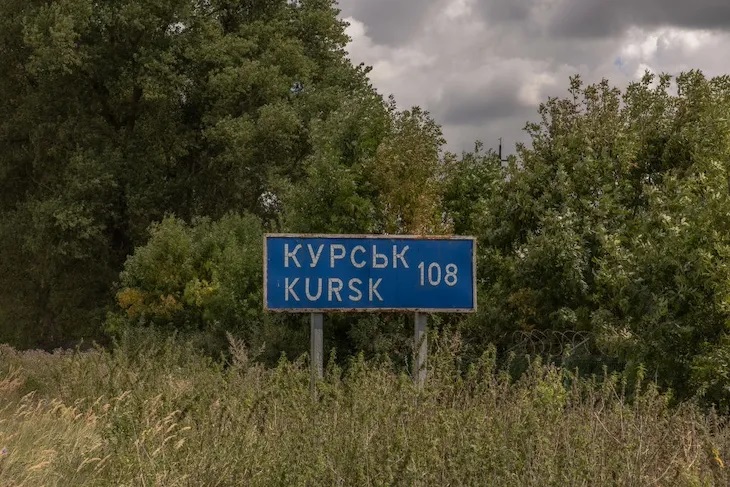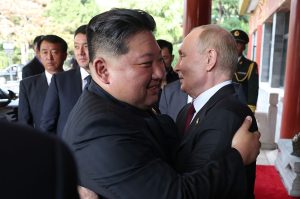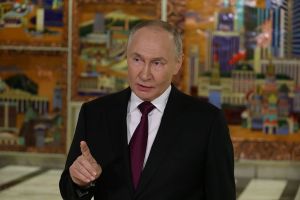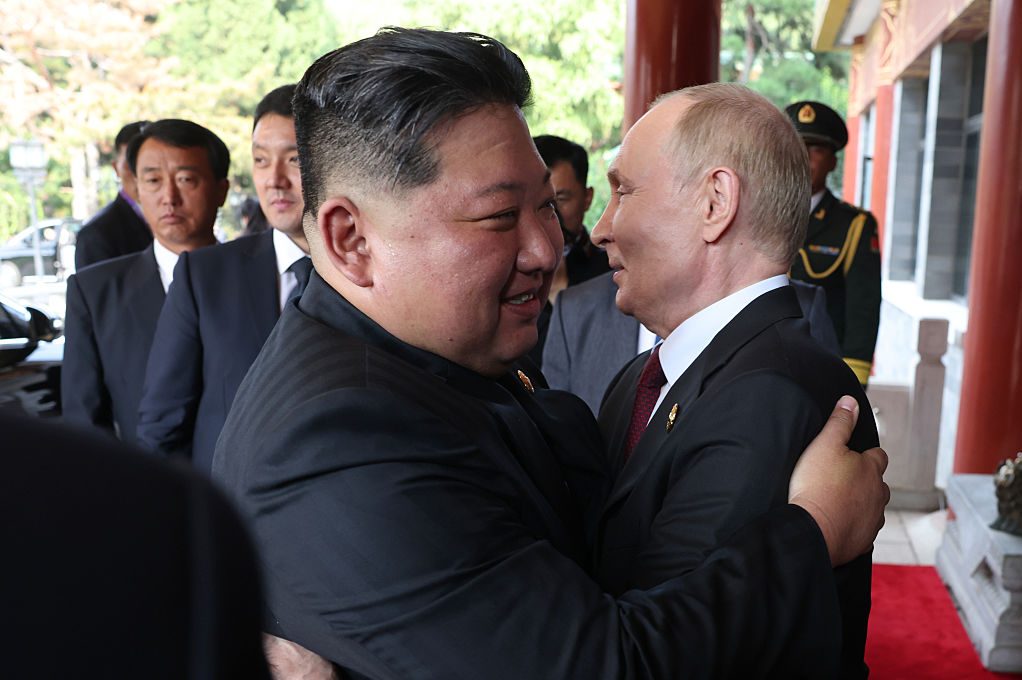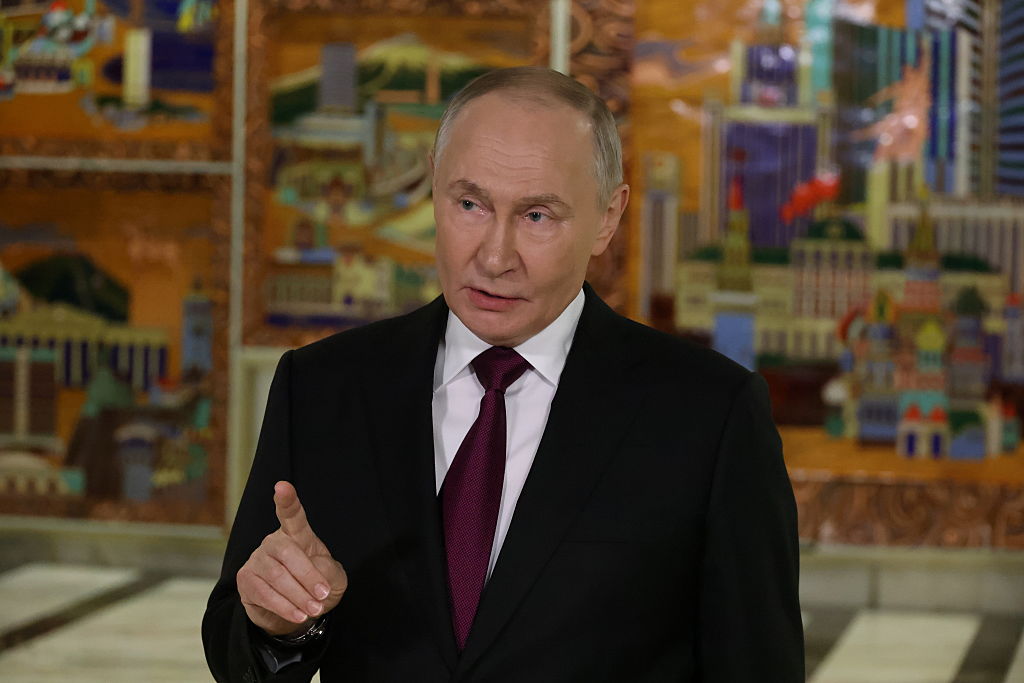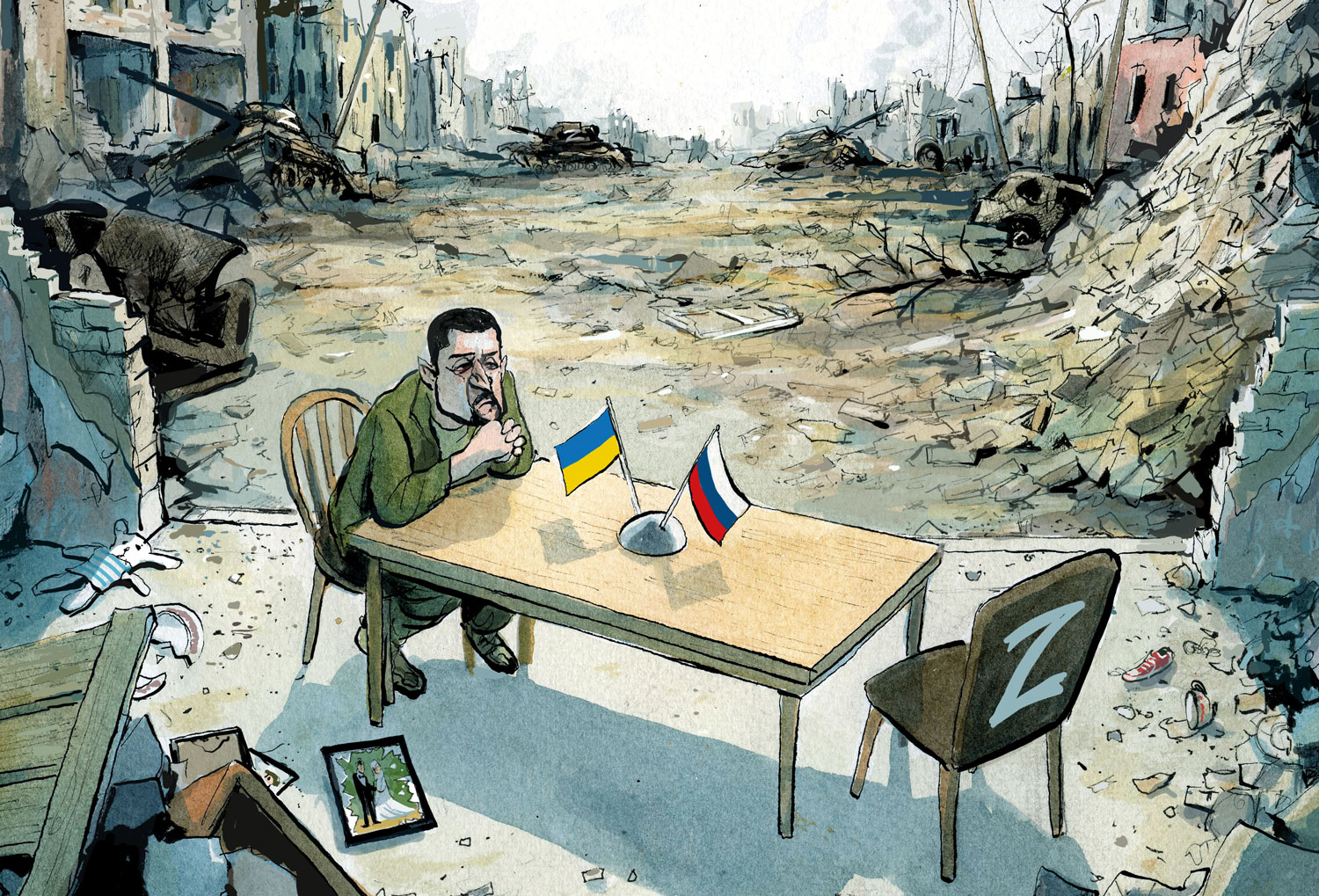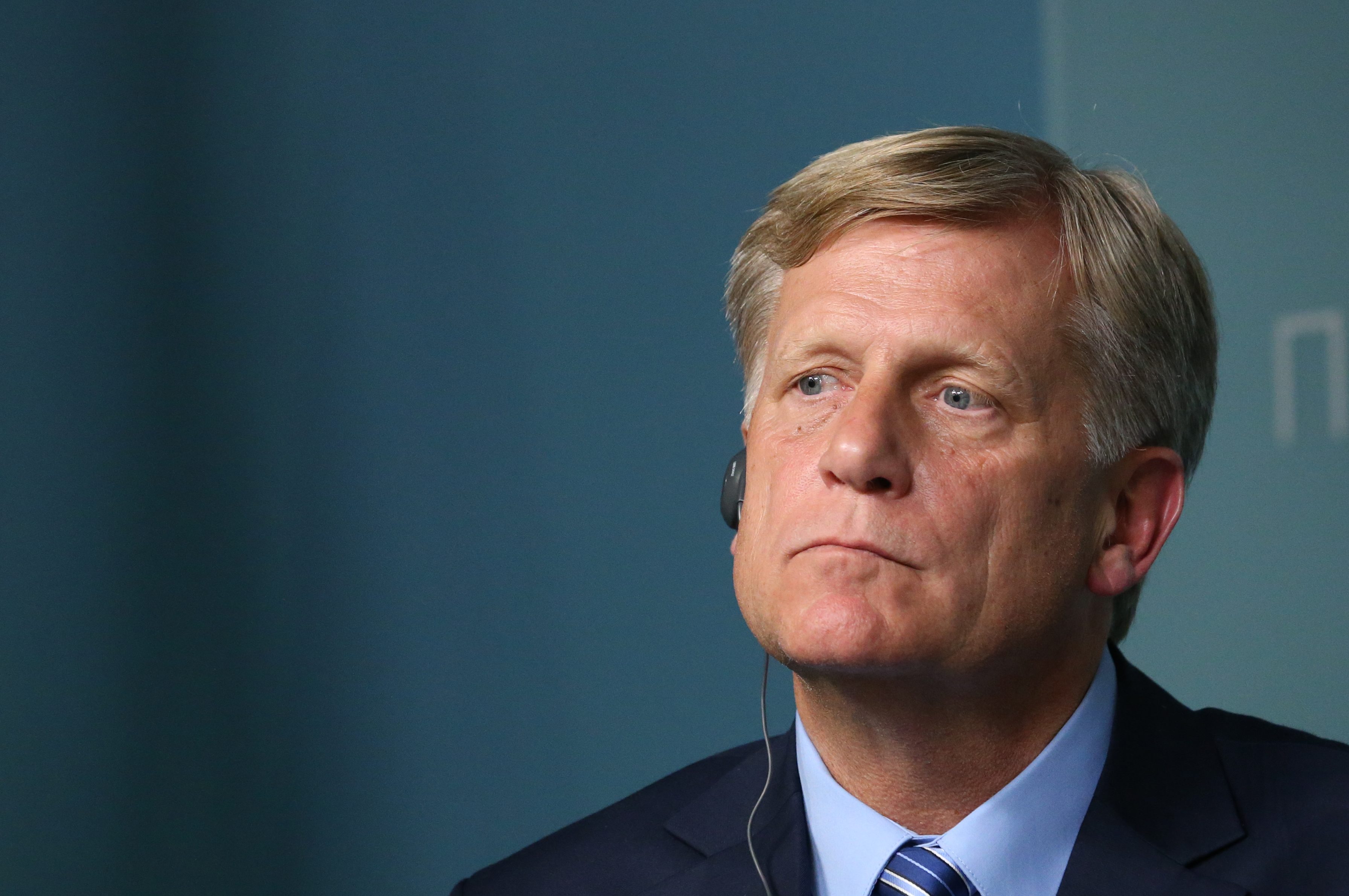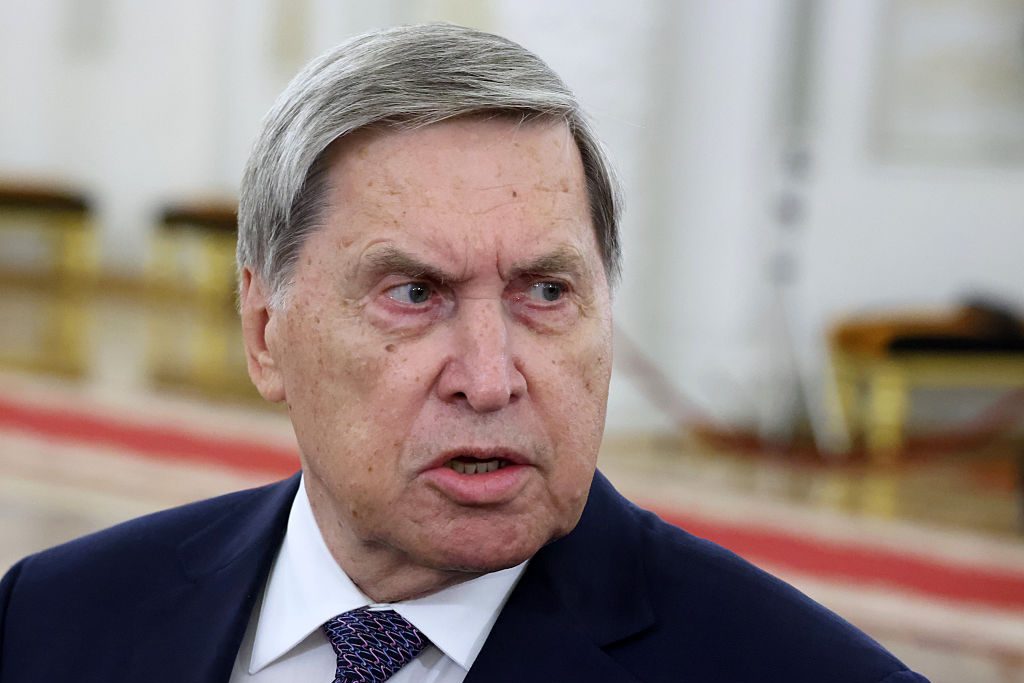As I write, four brigades of the Ukrainian army are advancing into the territory of the Russian Federation, and are establishing what looks like a bridgehead for further operations. They crossed the frontier from the Sumy Oblast, to the north of Kharkhiv seven days ago, overpowered the Chechen frontier guards, and have been rolling to the East ever since. They occupied the town of Sudzha and are supported by air-defense, tanks, artillery, mine-clearers and heavy engineering equipment. Their activities are being called an “incursion,” although nothing to date suggests a short-lived raid for reconnaissance or hit-and-run purposes. By now, the Ukrainian-occupied area has passed the 600 miles squared mark.
Anyone in the happy position of giving advice to Ukrainian commanders would strongly advise them to target this place
The reaction of the Russian authorities has been chaotic. They were definitely caught by surprise and had no coherent defensive measures in place. Vladimir Putin called it an “important terrorist provocation” and ordered a state of emergency in the Kursk Province. The mayor of Kursk has stated that so far 120,000 people have been evacuated. A number of villages in the line of the Ukrainian advance, like Lgov, have been cleared. Huge reinforcements have been promised, but at least one major military column has been ambushed and destroyed, reportedly by Ukrainian artillery using American Himar rocket launchers. Russian warplanes are flying low, clearly fearing anti-aircraft fire. Most interestingly, hints of political trouble are circulating. This week, a rumor surfaced about a bounty of one million dollars placed on the head of General Gerasimov by the new head of the Wagner Group, Pavel Prigozhin, son of the late Yevgeny Prigozhin, who died mysteriously last year in an air crash.
Intense speculation surrounds the unstated objectives of the Ukrainian operation. As usual, the Ukrainian command is saying little, but almost all commentators agree that the first aim is to relieve pressure on hard-pressed Ukrainian defenders in the Donetsk region and on the approaches to Kharkhiv. In recent months, Russian assault forces, whilst sustaining disproportionate losses, have made numerous local gains, and Russian missiles, often fired from across the border, have constantly rained down on Kharkiv, which lies a mere twenty-five miles from the frontier. So the more Russian resources the incursion draws away from the frontline the better for Ukraine.
Yet it is highly unlikely that the Ukrainian leadership is unaware of other benefits, both general and specific, which the incursion could produce, not least:
- It could break the impasse of the last two years, and open up the possibility of striking a decisive blow. If the Russians withdraw crack units from the frontline further south, they will leave gaps which Ukrainian assault brigades could exploit in ways not practical during last year’s counter-offensive. The world will begin to talk again of Ukraine taking the Crimean Isthmus and Melitopol
- Prolonged fighting on Russian territory is bound to cause political trouble in Russia for both Putin and the army command. Humiliation, even on a local scale, will blow a hole in their empty assurances that “all is going to plan.” It will have to be followed by radical changes, first in the army leadership and later in the Kremlin
- Success on the battlefield will stop Ukraine’s western allies from wavering and will put an end to the western media’s tendency to overstate Russian gains and to underestimate Ukraine’s powers of resistance. An extended war of attrition undoubtedly favors long-term forecasts of a Russian victory, while Ukraine’s ability to maneuvers and outwit its aggressors will greatly increase the chances of David defeating Goliath
- Cynical Russian sources have already suggested that Kiev’s main aim is to capture territory for bargaining purposes. This may be so, but all depends on Ukraine’s uncertain ability to hold on to its territorial gains until negotiations begin
- Early reports say that Ukrainian units have already gained control of the terminal at Sudzha of a Gazprom pipeline, that sends gas across Ukraine to Hungary and Austria. So far, Kyiv has chosen not to destroy that pipeline, but the ability to turn the taps on and off at will may discourage people like Viktor Orbán from continuing to court the Kremlin
- Pictures on the internet, taken from the roadside of the E38 between Kursk and Rylsk reveal that Russian mechanical diggers are already building a defensive trench line around the nuclear power station at Kurchatov. Should the Ukrainians penetrate that line, they would hold an important chip for countering Russia’ earlier capture of the Zaporizhia nuclear power plant
- The Ukrainians undoubtedly hope to cut the strategic railway line which runs from Kursk to Belgorod and which carries vital supplies from Moscow to Russian occupation forces in eastern and southern Ukraine
All these objectives are plausible. But there is another, which is rapidly coming into the Ukrainians’ sights, but which the western media have not yet cottoned on to. It is an object, which every Russian and Ukrainian officer will have studied in their training, and which every Russian and Ukrainian child will have heard of at school. Anyone in the happy position of giving advice to Ukrainian commanders, would strongly advise them to target this place.
Today, Prokhorovsky Field near Kursk is the site of an enormous museum. Officially named “The Third Battlefield of Russia Museum of Military Glory” it was completed in 2010 and lies beside the E105 arterial road south of Kursk. It is filled with gigantic monuments, memorials and display halls. Its elegant, gold-domed, belfry tower can be seen for miles around, and its exhibits are visited by hundreds of thousands, if not millions, every year. It marks the site of the Battle of Kursk in July 1943, which is (wrongly) billed as “the largest tank battle in world history,” but which, unquestionably, crippled the ability of Hitler’s Wehrmacht to mount further major offensives.

Prokhorovka is the centerpiece of Putin’s phony historical theories, which underly his invasion of Ukraine. As part of this thesis, the “Great Stalin” was deserving of eternal praise; Russia won the “Great Patriotic War” singlehanded; Putin’s rag-tag army is a worthy successor to Stalin’s victorious war machine; and “fascist” invaders will always be repelled from Russia’s sacred land. What Putin fails to emphasize is the fact that Stalin was the leader not of “Russia” but of the Soviet Union, and that millions of Ukrainian soldiers fought and died in Soviet ranks in the First Ukrainian Front of 1943-45. Ukrainians have as much a reason to take pride in the “Battle of Kursk”!as Russians do.
Before his invasion of Ukraine, Putin distributed a pseudo-historical essay to his troops, the essence of which misappropriates to Russia the legacy of everything from Kievan Rus to the Great Patriotic War. Instead of sharing that legacy with other Slavic nations, it denies Ukraine a right to exist. It would be like a German leader arguing that England should not exist because the Anglo-Saxons came from Germany.
Even so, ever since Czarist times, the western public has been regularly subjected to similar waves of Russian propaganda, that are hard to refute. Anyone who continues to conflate “Russia” with the USSR or with ancient Rus are following in the steps of the “useful idiots,” whose services Stalin much appreciated.
A simple photograph showing a party of smiling Ukrainian soldiers in front of the museum bell tower at Prokhorovka, would send shock waves round Russia. It would be endlessly multiplied on social media, and would be particularly effective if the soldiers were pictured shaking hands with their Russian counterparts or with the museum’s staff. It would be worth any number of cruise missiles or Himar shells, proving for all to see that Ukrainians are not “fascists” and want nothing more than for Russia to be a good neighbor. It might even sow the seeds of Putin’s demise.
This article was originally published on The Spectator’s UK website.



